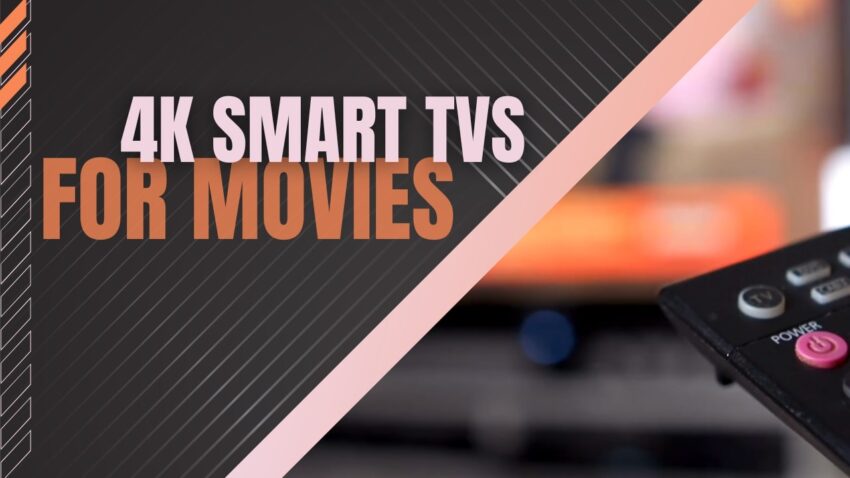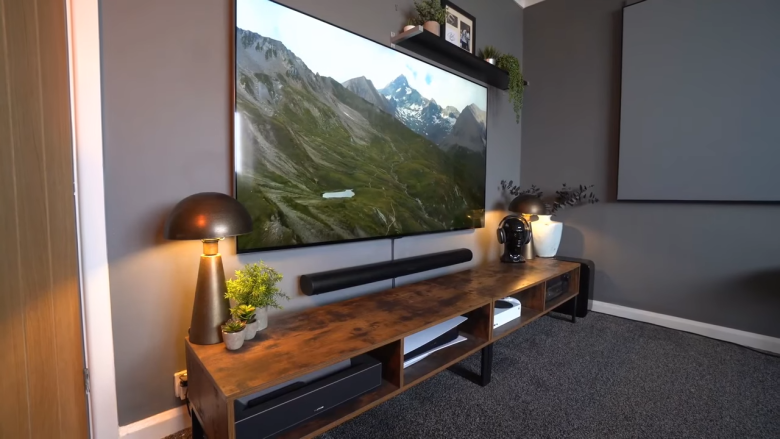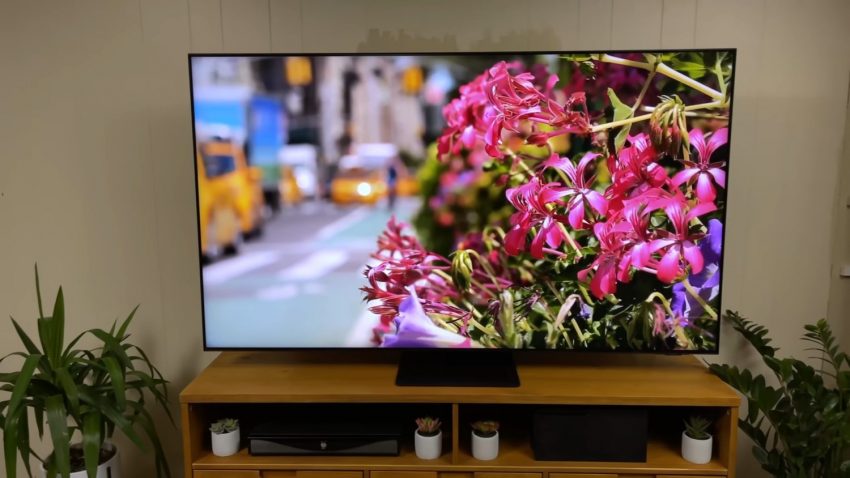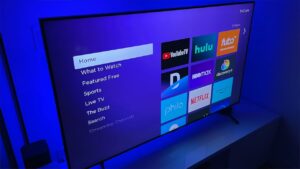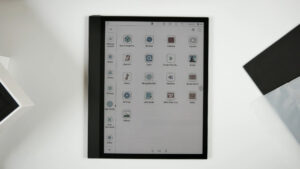When choosing the best TV for watching movies, you should first remember the lighting conditions in your Living room. When you watch movies in a dark room you should usually have a great experience. You will be searching for a TV that is capable of providing dark blacks, has vivid colors and bright highlights, especially in HDR content.
You need a best TV for Watching Movies and watch your favorite film and TV shows as soon as possible. And that ensures you need a 4K resolution Screen, outstanding color reproduction and a 50-inch display at least. Below are our recommendations for the best TVs for home theater and movies you can buy. See also our recommendations for the best 4k gaming TVs.
- Best TV For Watching Movies: LG CX OLED
- Best 4K TV for Dark Room: HISENSE H9G
- Best Color Accuracy TV For Watching Movies: Samsung Q80/Q80T QLED
- Best Budget TV For Watching Movies: Hisense H8G
- Best TV for Sci-Fi and Horror Movies: LG C8 OLED
- Premium TV for Watching Movies: Sony A9F OLED
- Best 65 Inch TV for Movies: Vizio P Series P65-F1
- Top QLED TV for Dark Rooms: SAMSUNG 65-Inch Class QLED Q80A Series
Unleash the Ultimate Movie Experience with These 4k Smart TVs
1. Best TV For Watching Movies: LG CX OLED
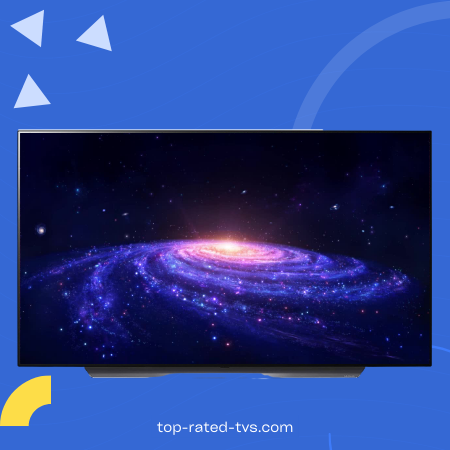
The LG CX OLED is the best TV for movies we’ve reviewed. It’s an entry-level OLED that offers outstanding overall efficiency, and most people can enjoy it to the fullest, whether you’re watching movies or just streaming content. It is very well and provides with a stand that makes it easy for it to rest by the table.
Due to its potential to view incredibly deep blacks, it’s best for watching movies. It switches individual pixels off, resulting in an infinite contrast ratio and complete black uniformity, suitable for viewing movies in dark rooms.
It prevents 24p judder from any source that helps enhance the presence of motion in movies, such as Blu-ray players or native applications. It claims to support both HDR10 and Dolby Vision and shows a very broad range of colors for HDR content, but unfortunately, in that mode, it doesn’t get bright enough to bring out highlights.
It has eARC support if you want to attach a sound bar to improve your movie experience, allowing you to send high-quality audio through an HDMI link to a receiver.
Unfortunately, like any OLED model, if you see varied content, it has the possibility of permanent burn-in, which should not be a concern. It doesn’t get really bright, but it has excellent reflection management if you want to put it in a bright room. There are also a number of applications available for download on the built-in WebOS, making it easy to watch your favorite movies. Overall, it gives superb image consistency, making it the best TV for movies we’ve reviewed.
Read more: LG CX Model
| Feature | Specification |
|---|---|
| Screen Type | OLED |
| Resolution | 4K (3840 x 2160) |
| HDR | HDR10, HLG, Dolby Vision |
| Smart Platform | webOS |
| HDMI Ports | 4 |
| Screen Sizes | 48″, 55″, 65″, 77″ |
- Infinite contrast ratio.
- Wide viewing angles.
- VRR support.
- Displays wide color gamut.
- Risk of permanent burn-in.
2. LED ALTERNATIVE: HISENSE H9G
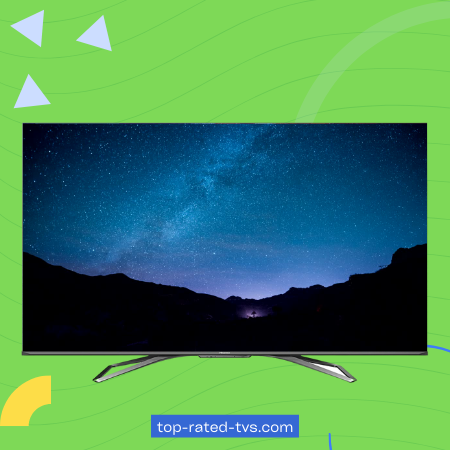
If you’re worrying about the chances of permanent burn-in on the LG CX OLED, then you can go for an LED TV like the Hisense H9G. It has a high contrast ratio improved by a full-array local dimming mode, making for a fantastic dark room viewing experience to create deep blacks.
With its wide color gamut and high peak brightness, it provides a fantastic HDR experience, and thanks to its quick response time and Black Frame Incorporation functionality, it manages fast motion well.
It has a very short input lag; however any variable refresh rate technology is not enabled to decrease screen tearing while gaming. In the plus side, it has plenty of applications available for its Android TV site, and its VA panel is resistant to permanent burn-in.
Overall, thanks to its OLED panel’s ability to generate perfect blacks and almost instantaneous reaction time, the LG is a safer choice for most individuals. If you’re concerned about burn-in, though the Hisense is an exceptional option.
| Feature | Specification |
|---|---|
| Screen Type | LED |
| Resolution | 4K (3840 x 2160) |
| HDR | HDR10, Dolby Vision |
| Smart Platform | Android TV |
| HDMI Ports | 4 |
| Screen Sizes | 55″, 65″ |
- Outstanding contrast ratio.
- Makes highlights pop in HDR.
- Amazing response time.
- Excellent reflection handling.
- Narrow viewing angles.
- No VRR support.
3. Best Color Accuracy TV For Watching Movies: Samsung Q80/Q80T QLED
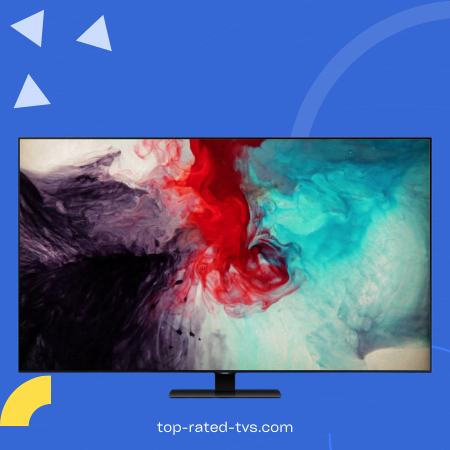
The Samsung Q80/Q80T QLED is the finest TV that we have reviewed for watching movies with precise colors. It’s a flexible model that offers amazing image quality, plus it comes out-of-the-box well calibrated, so you certainly won’t have to pay extra for calibration. As it has a high contrast ratio, a full-array local dimming feature, resulting in deep blacks, it’s perfect for watching movies in the dark. It has good viewing angles, which ensures that when seen from the edge, you don’t sacrifice too much image precision.
As stated, color accuracy is outstanding, and for most people, any variation should not be visible. To generate vivid colors in HDR material, it has excellent coverage of the DCI P3 color space, and it handles gradients well to reduce banding. It will eliminate judder from all outlets, but because of its fast reaction time, low frame rate content such as movies can seem to stutter a little.
It has incredibly low input lag, a 120Hz refresh rate, and supports FreeSync if you intend on gaming. It has an HDMI 2.1 port, making the new PS5 and Xbox Series X consoles a perfect match.
The good news is that Samsung’s Tizen OS has a broad array of applications if you get your content from subscription platforms, so you should be able to find what you need. The interface is simple to use and runs smoothly, and to help you find content, there is also voice control available.
Owing to the absence of the ‘Ultra Viewing Angle’ layer, the 49 inch model has a 60Hz screen, doesn’t support VRR, and has narrower viewing angles. All and all, the Q80T is worth trying out if you want a TV that reliably shows colors with limited tweaking.
| Feature | Specification |
|---|---|
| Screen Type | QLED |
| Resolution | 4K (3840 x 2160) |
| HDR | HDR10, HDR10+, HLG |
| Smart Platform | Tizen |
| HDMI Ports | 4 |
| Screen Sizes | 49″, 55″, 65″, 75″, 85″ (Q80T only for 49″) |
- Excellent response time.
- Great contrast ratio.
- Remarkable reflection handling.
- Decent viewing angles.
- Corners of the screen appear darker.
4. Best Budget TV For Watching Movies: Hisense H8G
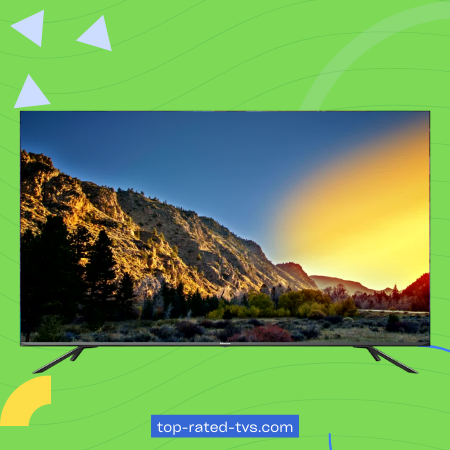
The Hisense H8G is the best TV for movies in the budget category that we’ve reviewed. Given its budget price point, it’s remarkably really strong and is perfect for a wide variety of uses. To create deep uniform blacks, it has an outstanding contrast ratio, good black uniformity, and full-array local dimming, ideal for dark room viewing. It looks really sleek as well and has slim bezels across the screen.
The response time is very low, and to further minimize motion blur, it has an optional Black Frame Insertion mode, giving you a crisp picture behind quickly objects with a limited blur trail. Thanks to its very broad color gamut, it’s a very good choice to watch HDR content, but unfortunately, it can’t get very light. On the bright side, if you watch any of your HDR content from subscription platforms like Amazon Prime or Apple+, it supports Dolby Vision, which is awesome.
Unfortunately, as with most versions that use a VA panel, viewing angles are disappointing, so if you have a big room or a big seating configuration, it might not be a reasonable option. Also because of its surprisingly low input lag, although it has some gaming chops, it does not support any variable refresh rate technology. Overall, this is a perfect solution if you don’t want to break the bank but still want an best TV that’s great for movies.
| Feature | Specification |
|---|---|
| Screen Type | LED |
| Resolution | 4K (3840 x 2160) |
| HDR | HDR10, Dolby Vision |
| Smart Platform | Android TV |
| HDMI Ports | 4 |
| Screen Sizes | 50″, 55″, 65″, 75″ |
- Displays deep blacks.
- Great SDR peak brightness.
- Incredibly low input lag.
- Narrow viewing angles.
- Limiting HDR experience.
5. Best TV for Movies: LG C8 OLED
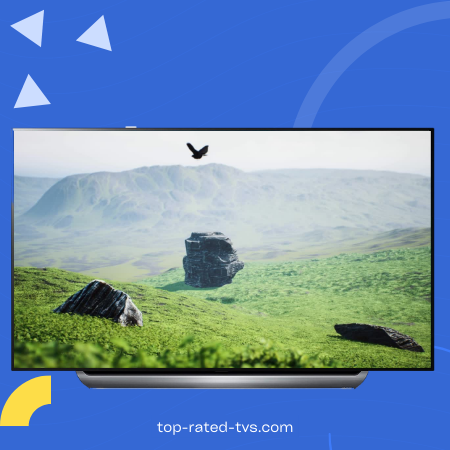
This LG C8 is the best TV for movies, you can expect impressive HDR gaming performance along with perfect picture quality, especially in darker rooms. A great pick for sci-fi and horror fans. With this smart TV you can expect the very best performance that other televisions will struggle to replicate. Whether its the incredibly dark blacks of the C8 or the wonderful colors regardless of the sources scene.
The LG C8 is a mid-range product offered in screen sizes of 55, 65 and 77 inches, with a distinctive glossy black livery. Glass extends from edge to edge, with only a bezel to lock in place. The panel sits on the Alpine stand of LG, essentially a counterbalanced trim which is a little plasticky but hardly visible.
| Feature | Specification |
|---|---|
| Screen Type | OLED |
| Resolution | 4K (3840 x 2160) |
| HDR | HDR10, HLG, Dolby Vision |
| Smart Platform | webOS |
| HDMI Ports | 4 |
| Screen Sizes | 55″, 65″, 77″ |
- It has very low input lag and brilliant motion handling
- It has a fantastic design and builds quality.
- It has a well-built stocky stand
- It stays fairly cool across the entire screen.
- HDR highlights stand out and are extremely bright.
- For those people who play games with a lot of static content, the brightness of the screen changes depending on the content and areas of static content may have a risk of burn-in.
Summary: Excellent choice for watching movies in a dark room. Perfect blacks result in deep and detailed dark scenes. The TV can display most content without judder, but some stutter is visible due to the low frame rate of movies – especially for wide panning shots.
Read more about: LG C8 OLED TV
6. Sony A9F OLED
This A9F 2018 OLED model features remarkable build quality with premium materials, has great deep blacks, with amazingly wide viewing angles, and fabulous design.
The artist program A9F is the latest from Sony, part of the Master program road that was established in mid-2018. But despite its newness, it has the pattern that borrows heavily from the 2017 choice, that Sony Bravia A1E.
Like that Sony A1E, the artist program A9F utilizes the easel-style kickstand to prop up the television, instead of conventionally attached feet. The outcome is the door that sits flush with whatever board or slice of furniture it’s played on, but it also implies that this action leans back a little, putting the display at an angle.
This A9F 2018 OLED model features remarkable build quality with premium materials and a high-end display. the ability to capture video in HD resolution up to 1080p. The a9f is equipped with a 4 K ultra HD screen, which allows you to see the full picture of your favourite shows and movies. The a9f also has a built-in WI-fi connectivity that enables you to enjoy the best of both worlds. It’s an amazing device for watching movies and TV shows.
- This Android 8.0 smart TV is much faster than previous Sony TVs for gaming.
- It has marvelous motion handling
- Low input lag with close-instantaneous response time
- It comes with 4 HDMI ports.
- A9F has very good and clean cable management
- You might not like its brightness with its bright white scenes.
- This TV could go through permanent burn-in
Summary: The A9F is outstanding for watching movies in a dark room. The OLED panel delivers a perfect dark room viewing experience, and the image looks great, even if you are viewing from the side. It has a near instantaneous response time, which may bother some people as 24p content stutters. It is also free from 24p judder.
Read more about: Sony A9F OlED
7. Vizio P Series P65-F1

One of the best TV in 2018 is the Vizio P Series P65-F1 which is 65 inch in size. The cost is relatively low that is below $1000 and it can be affordable by everyone. Compared to other TVs there are Many extra features in the Vizio P series. We can use it as a PC monitor and play games on it. The image quality and resolution are high. Wide range of colors can also be displayed.
Summary: This is a very good TV for watching TV shows in a bright room. It has very good reflection handling and great peak brightness, so glare shouldn’t be an issue in most rooms. Unfortunately, lower-resolution cable shows aren’t upscaled as well as on other brands, and it has a limited selection of streaming apps, which might disappoint cord-cutters.
Read more about Vizio P Series
| Feature | Specification |
|---|---|
| Screen Type | OLED |
| Resolution | 4K (3840 x 2160) |
| HDR | HDR10, HLG, Dolby Vision |
| Smart Platform | webOS |
| HDMI Ports | 4 |
| Screen Sizes | 55″, 65″, 77″ |
8. SAMSUNG 65-Inch Class QLED Q80A Series
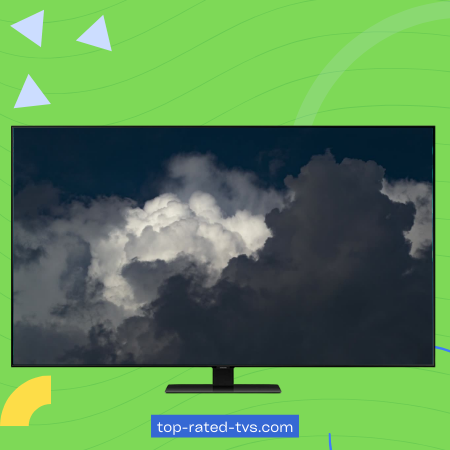
The most impressive TV I’ve analyzed in years is the SAMSUNG 65-Inch Class QLED Q80A Series. It efficiently combines QLED’s popular brightness and color, or Quantum Dot LED, with OLED’s deep blacks and nearly color accuracy.
As the highest offer in the QLED 4 K TV range of Samsung, the Samsung includes every specific item that the company provides on its standard TVs and more. Available in both 65- and 75-inch sizes, you’re going to be hard-pressed to discover another commercial TV with a superior feature set, and the performance of the picture is on a level with the best TVs in the industry.
Summary: Excellent TV for movie lover in a dark room. It has a high native contrast ratio combined with great local dimming results in deep dark scenes. The black uniformity is also excellent and movies from most sources are displayed without any judder or cadence issues.
| Feature | Specification |
|---|---|
| Screen Type | QLED |
| Resolution | 4K (3840 x 2160) |
| HDR | HDR10, HDR10+, HLG |
| Smart Platform | Tizen |
| HDMI Ports | 4 |
| Screen Sizes | 65″ |
How I Find The Best TVs
Sometimes finding the best TV for movies is easy and other times it is hard. Whether it’s the color gamut that just barely makes the cut, the TV just not being large enough, or if it is simply too expensive, I weigh all the options I can to make sure all the heavy lifting (pun intended) is already done. So to help fill in the blanks of my top 5 smart TVs, I’ve organized the most important information below.
Color Saturation Is Key
So if you’ve been shopping for a smart TV, you’ve probably noticed the “4K HDR” tags on nearly everything. Granted most brands use this as a marketing ploy, but the best TV for movies, need to be able to produce a high-dynamic range. The bottom line of a HDR is to help smart TV better replicate a more realistic picture that older television sets were not very good at. So what is it exactly?
In short, it is mainly looking at the nits that a TV can produce. So basically, when you look for the best TVs for movies, you’re literally nit picking, but in all seriousness, nits are a measurement of luminosity from a light source. In the case of TVs, it is in reference to two different concepts: Contrast and Color Saturation or color gamut.
Contrast is the difference between the darkest blacks and brightest whites in the picture while color saturation is more of a range. The larger the range, the more colors the TV can represent and produce brightly to you as the user.
Though, as this is a huge game changer for the best TV for movies, be warned that 4K HDR content is not every where and can be hard to find in places that aren’t movie related. This is what makes it an ideal trait though. It allows each movie to look exactly as it was intended while maintaining an immersive feel throughout each scene.
To give a little visual I’ve added (to the right or below) some images that represent different standards of color gamuts to give you an idea of what colors you might have at your disposal or the ones you’re missing out on!color gamut_best tvs for movies
Contrast and Local Dimming
Another important piece for any smart TV that is meant for movies will be its native contrast ratio, and its local dimming features with how well these features perform. A contrast ratio is a fairly easy metric to understand. It is a measured amount of how much brighter the white pixels are than the black pixels.
This infers how deep the blacks in the picture will be and how clear your content will look. It is often expressed as “x:1” where X is equal to white pixels and the 1 equal to the blacks pixels. So, imagine you saw a 5500:1 contrast ratio, this would then mean that particular smart TV displays white pixels approximately 5500 times brighter than its black counterparts.
Furthermore, that kind of ratio is well above average and you can expect a nicely crisp picture for your content. In addition to a clearer picture, the contrast ratio also allows for a better viewing experience in a darker room. This is why for the best TVs for movies it is weighted so heavily because no one exclusively watches movies in the daytime.
In conjunction with the contrast ratio is its closely related brother/sister if you will. Think of the contrast ratio as a static measurement that remains that way as content is played, but local dimming is more dynamic and adapts as the same content is played to enhance the contrast ratio.
You’ll often see many different smart TVs that have different local dimming zones to help enhance this feature further, but it comes down to whether or not the zones they do have actually work as they’re intended. Some unwanted effects might be blooming around bright colors or solid white pixels, zones that do not respond fast enough because they are too large, and if the smart TV is too assertive with its dimming effects.
On the flip-side, the best TVs for movies will usually have many zones that are very small in comparison so that they respond quickly. This prevents parts of the screen from being dimmed when they should not be and overall helps your eyes from becoming annoyed by the changing brightness of the screen.
4k vs 1080p Resolutions
Choosing the right resolution can seem hard, but for the best TV for movies, you will want 4k support every time. See, a resolutions is just the number of pixels up/down and left/right in a screen viewing space.
1080p resolutions only have 1920 pixels to the right, and 1080 pixels up which is where the 1920×1080 name came from. On the other hand 4k options have 3840 to the right or left and 2160 up or down. This means that 4k resolutions literally offer 4 times the amount of space as its 1080p counterpart, but what does this mean for you?
This means you have more pixels to fill with information, which leads to a clearer picture and also allows for you to sit further away from the TV while getting the same viewing experience of a 1080p smart TV.
The only sincere drawback to 4k TV sets at the moment are that 1080p options are becoming more affordable than ever. So if you’re on a tight budget you may want to consider a 1080p television, but when it comes to the best TVs for movies, you’ll want 4k any day of the week.
Inputs Matter No Matter What
This might seem simple enough to skip over, but it is still very important. When looking for the best TV for movies, you’ll want to seek the ideal inputs. This is because even though the TV itself can support an HDR signal, that same information must be transferred through the HDMI cables through our media devices as well.
Though, all of the inputs play a role in fully taking advantage of your smart TV, the most important are going to be the HDMI port with a doubt.
The first being HDMI 2.0A input ports. I recommend 3 or more as many smart TV come with an average of 3 nowadays. This is very straightforward, but without these inputs you’ll being missing out on many details inside of the picture.
These bad boys offer 4K resolution support which is another topic I’ll cover below. In short it allows you 4x the pixel space 1080p content allows for which gives you a more refined and sharp picture.
HDMI 2.0A also support HDR and Wide Color Gamuts which are linked very closely. Without either the picture quality drops tenfold. Finally, the 2.0A input ports offer 60 fps support.
This is truly ideal for content that is sourced higher than 30 fps and prevents judder from being introduced into the picture. This in turns give the best TVs for movies an advantage because they give a much more immersive experience than its counterparts.
Conclusion:
Our suggestions above are what we found thebest TV for watching movies available in the market. These are the best TV for watching movies to buy in every price range for you. We have analyzed the features and functions of each product and reviewed our best for the buyers.
Related Posts:
- From Romantic Movies to Action: An Overview of…
- 10 Best 82-Inch TV 2024 - Great TV for Large Rooms
- 15 Best 40 Inch Smart TVs 2024 - 4K, Ultra HD Top Picks
- Vizio M-Series 4K Smart TV 2024 - Enjoy Watching…
- Sony Z9F 2024 Review (XBR65Z9F) - Best 4k TV for…
- 10 Best Wireless Headphones for Your TV in 2024 -…


